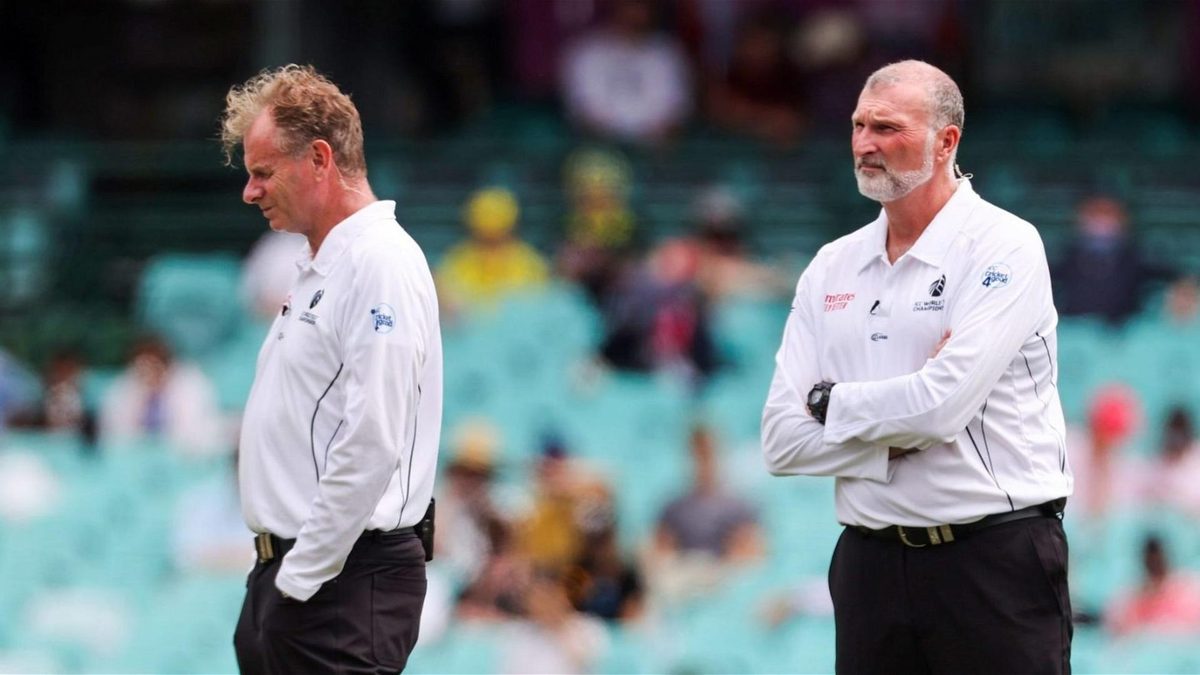
Late on the second day at the MCG came a moment that ultimately had no material impact on the third Australia-India Test, but angered away fans regardless.
Though Ajinkya Rahane was reprieved on ‘umpire’s call’, India supporters were irked that the review had been allowed in the first place, with the on-screen timer running out before Tim Paine signalled his intent to send the decision upstairs.
In this case, it’s hard to argue the umpires did much wrong, however. They have limited discretion over the timing allowed, and aren’t beholden to any clock used by the broadcasters. Some felt Paine had already made the all-important ‘T’ sign after 13 seconds, albeit mutedly, too.
However, there was plenty else involved in the incident that went largely undiscussed, but should cause much more consternation, with the ICC Playing Conditions seemingly contravened in several places.
First, clause 3.2.3 off appendix D, which concerns the third umpire protocol, which reads, in part: “Under no circumstances is any player permitted to query an umpire about any aspect of a decision before deciding on whether or not to request a player review. If the on-field umpires believe that the captain or either batsman has received direct or indirect input emanating other than from the players on the field, then they may at their discretion decline the request for a player review.”
https://twitter.com/KirketVideos/status/1347440946821132289
In this instance, Paine could clearly be seen asking umpire Paul Wilson whether he judged Rahane to have played a shot or not. After Paine made the signal to review, Wilson had a lengthy discussion with fellow umpire Paul Reiffel. While the commentators originally speculated that they were deliberating over whether the review had been made in the allotted time, Wilson then said to Paine, “I’m going to say it’s not a shot. Do you want to refer it?” Paine confirmed his intention.
We have, therefore, Paine asking for information from the umpire, which he is specifically barred from doing, and Wilson giving him information, which should lead to their request for a review being declined. For good measure, he then gave Australia another minute to consider their decision to refer, despite clause 3.2.6 saying: “A request for a player review cannot be withdrawn once it has been made.”
It wasn’t quite an isolated incident either. On the third morning Cheteshwar Pujara padded up to a slow delivery, and after Australia’s initial appeals had been shot down, Wilson once again informed them Pujara hadn’t offered a shot.
And as is often the case, once you find one thing to quibble about, more presents itself. Could Wilson have been sterner when Paine queried an upholding of a ‘not out’ decision on review, rather than passing the back onto the TV umpire? Should he be sterner in general, with the Australia captain drifting into reasonably consistent complaints, both in the moment and in post-match reflections?
The wider context is that, to help mitigate the need for international travel, non-neutral umpires are once again allowed in Test cricket. West Indies captain Jason Holder is the most prominent name to come out against their continued use, and while there is no suggestion of deliberate bias from Wilson or any other match official, if the experiment is to be continued with, the umpires must be seen to be whiter than the coats they wear. In this Test, Wilson has fallen some way short of the mark.
It’s ironic that the measure brought in to mitigate the impact of non-elite and non-neutral umpires – an extra review per innings – is what has caused the controversy here, only giving another opportunity for influence. And while it was Paine who cried out for some “f***ing consistency” on the third morning, really it’s India and their fans who have the right to be incensed.








